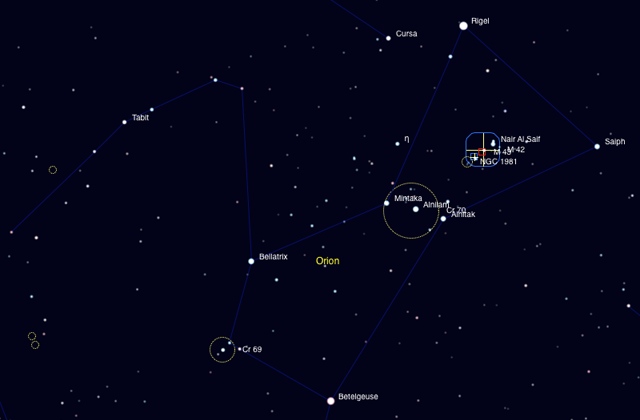M42: Orion, the Hunter
Look about 45° in the north-western sky during early summer and you will find the constellation Orion. The two brightest stars are Rigel, a bluish-white super-giant some 900 light years away (1 light year equals 9.5 trillion km). It is 40 times larger and about 57,000 times more luminous than our Sun. It also has a companion star, but you would need a 150mm telescope to separate it. Across from Rigel isSaiphwhich forms Orion's other 'trunk'.

Diagonally opposite Rigel is Betelgeuse (a variable star), one of Orion's shoulders. It is a cool red-giant, possibly the largest star in our part of the Milky Way and is estimated to vary in size from the orbit of Mars to the orbit of Jupiter. Across from Betelgeuse is Bellatrix (the Amazon star), which is Orion's other shoulder.
The three stars, Mintaka, Alnilam, and Alnitak (half way between the shoulders and the 'trunk'), are known as Orion's Belt; both Mintaka and Alnitak are multiple stars but it takes some effort to separate. A line of stars going up from the Belt towards the 'trunk' is Orion's Sword (this group of stars are commonly known asThe Saucepan). This group, when viewed with the unaided eye or through binoculars, looks like a large fuzzy patch, but when viewed through a small telescope it appears as two nebulae - one large and one considerably smaller.
The larger is M42 and when viewed with a small telescope, you will find a group of four young, bright, hot white stars called the Trapezium near the centre. Under ideal seeing you can find two more stars in this group. Just below M42 you will find an emission nebula, M43 (de Mairan's Nebula), which appears to be connected to M42, but it is not. The dark lane separating M42 and M43 is known as The Fish's Mouth. This area of gas and dust is the birth place of new stars.